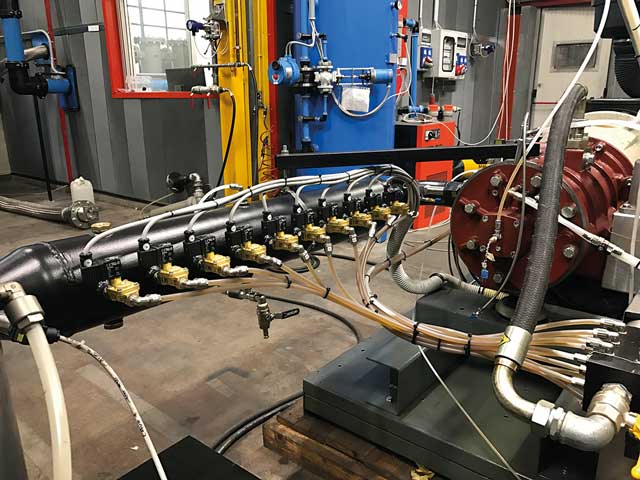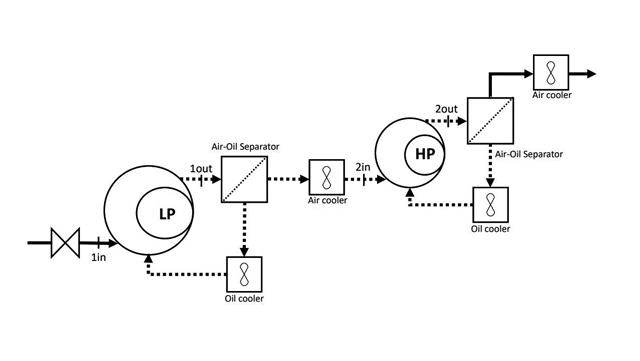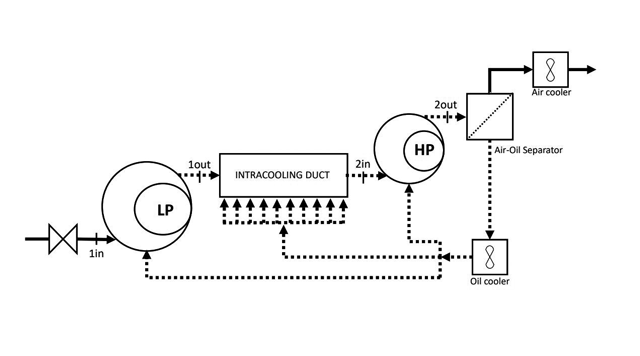
Improved energy efficiency is a key objective for firms of all sizes, and compressed air is a particular focus. Mattei managing director Andy Jones discusses how an innovative development can help achieve these goals.
Government statistics show that progress is gradually being made in reducing greenhouse gases produced by industrial processes in the UK. The latest official estimates from the Department for Business, Energy and Industrial Strategy show that carbon emissions almost halved between 1990 and 2018.
However, compressed air systems are still very power-hungry. Sliding vane rotary compressors are highly efficient, but there is still room for raising their energy performance.
New research carried out by Mattei has found that redesigning two-stage compressors can achieve extra savings through improved mechanical and electrical efficiency.
Innovative process
Intercooling is a common practice in compressor technology for reducing the power required for operation. This method works by first separating the air from the lubricating oil, then reducing the temperature of the compressed gas between the low and high pressure stages of compression using a heat exchanger. Typically, water or air acts as the coolant. In intercooling, thermal power is transferred from the gas to the environment.

Mattei’s research shows that the concept of intracooling achieves even better results in two-stage compressors. Intracooling is the process of cooling the compressed gas between the two compression stages by spraying cooled lubricant oil as small droplets into the gas flow in an intracooling/connection duct.

The key feature of intracooling is that the cooling oil is not separated from the gas after the first stage. It is left in the flow to lubricate the next compression stage, before being separated from the compressed gas at the end. Overall, thermal power is transferred from the gas to the liquid and not to the environment, avoiding the presence of a dedicated cooling system between the two stages and auxiliary power needed for it.
Defining the test
To investigate the concept, Mattei set up a study on the effectiveness of intracooling. A prototype of a sliding-vane air compressor was created and equipped with instrumentation to measure the temperature and pressure of air and lube-oil at all key points of the circuit, as well as the injected oil flow rate and the electrical power.
Thirteen different configurations for the pressure swirl nozzles, which inject the oil into the intracooling duct, were tested, all under the same pressure and temperature injection conditions.
Efficiency gains
Comparing the results with a conventional single-stage compressor, a two-stage compressor with intracooling achieved energy savings of up to 10%. Compared with an intercooled compressor, 2.3% less input power is needed with an intracooled system because of the more efficient compression process.
This is because at the low-pressure stage, the intracooled compressor can inject the oil at a higher pressure, leading to a finer atomisation of the oil for better heat transfer. Moreover, in intercooling, at the end of the first compression stage there is a pressure drop at the cooling fan. This means that more power is needed to compress the air at the second stage. In intracooling, no pressure drop occurs in the connection duct.
Temperatures across the duct between the two stages are reduced by up to 10°C.
What do these findings mean for the efficiency of sliding-vane rotary compressors?
Because an intracooled compressor achieves a more efficient compression process than an intercooled one at the low-pressure stage, less power is used overall.
The possibility of extending the operating pressure range also arises, and there are fewer pieces of equipment to operate and maintain.
Further development is needed to refine the design before launch, and Mattei believes even more energy savings can be made in the high-pressure stage. Mattei is also in the process of developing a smart system to control nozzle activation – the effectiveness of the intracooling process is heavily dependent on the number of active nozzles and their positions.
For the future, industrial air compressor operators should consider the benefits of this process if they are serious about looking for new ways to save energy. Watch out for further developments.
For more information visit
www.mattei.co.uk or www.matteigroup.com

